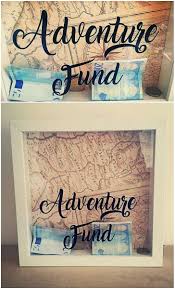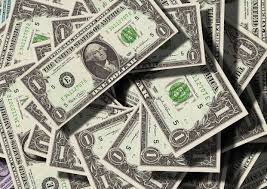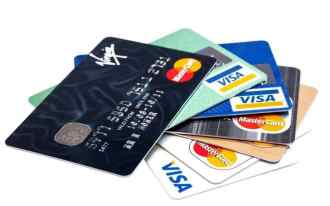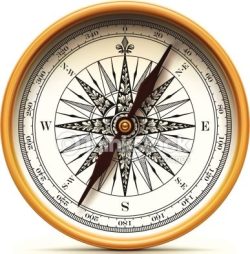Do you struggle with money for travel?
Yes, there is always the issue of wanting MORE of it!
That goes without saying, but what is the best way to travel with and access money?

I travel a lot and love every minute of it, but I am yet to approach a trip without wondering and worrying about the best way to carry my cash when I am in another country.
I have tried a few different tools and techniques, but I feel that perhaps I am missing out on the ultimate solution.
Can you enlighten me? What tip or trick would reduce the stress?
This is what I have tried so far:
CASH: I always carry enough currency of the country I am visiting, to get me through the first day or two. I do not feel comfortable or safe carrying a large amount of cash around, but it is a comfort knowing I have the capacity to buy a coffee or a train ticket as soon as my feet hit foreign soil.
Small denominations are the key as the last thing you need when you are jet-lagged and weary are scornful or dirty looks from surly waiters and/or bus drivers.

The question is, how much cash do you feel safe carrying?
Beware the money changers: Depending on your country of choice, be very alert when swapping your home currency with the local one. We had a very educational experience a few years ago in Bali, when the money changer carried out the ultimate slight-of-hand trick, considerably short-changing us. Fortunately the Brave Man* is very tall and imposing and putting on his angry voice, we returned to said money changer and encouraged him to return all our missing cash. A lesson well-learned.
Note: Some foreign currencies are ‘protected’ meaning that they not available outside of their country of origin. Indian rupees are one of those.
CASH CARDS:
- Australia Post Load and Go Travel Card: I have used this card in the USA and throughout Europe. You load up Australian dollars and then convert those dollars into a number of foreign currencies by using the ‘wallets’ (AUD, USD, EU, UK

Photo: pexels.com Pounds, and NZD) at today’s exchange rate. The Australia Post exchange rates are fairly competitive and it is good to know how many Euros etc. you have before arriving in a country. If you are travelling to multiple countries, you then arrange the different currency wallets in the order you want to use them. As the exchange rate has already been calculated, you simply pay the ATM fee (€2-3 in Europe) each time a withdrawal is made. Obviously it is best to limit the number of withdrawals. This card has no set-up fee, but a $15 fee when your card expires and a new one is issued.
- Citibank Plus Debit Card: I am trialling this card on my upcoming trip to India. It came recommended by a friend as a card that is widely accepted/usable in the ATMs of that country. Unlike the Australia Post card, this one is loaded in Australian dollars, and I will be withdrawing Indian rupee. It will be interesting to see how hefty the fees and charges are.

CREDIT CARD: 28 Degrees Mastercard: I have found this credit card to be a useful and effective travel tool. There are no foreign exchange fees, just a straight conversion. I have noted that they have recently implemented an online management fee of around 0.95c per statement, but I don’t think that is too mean. I have used this on many trips, and I also use it for any online shopping from international sites.
The main challenge with any sort of card or money management is to remember all the different PIN numbers! Yes, I know I need a pin for security reasons, but I get a bit addled trying to keep my international pins separate from my domestic pin numbers! Maybe I am getting old??
Of course all of the above is truly a ‘first world’ problem. It is a joy and privilege to travel the world and juggling cards, cash and PINs is all part of the travel experience.
Despite my many past, and future travel miles, I would like to ‘do’ this part of travel better.
What money cards, tips and tricks do you use?
*The Brave Man refers to my husband. He is indeed a brave man for marrying a crazy woman like me!


When do u go to India?
One of my FB friends from my 2011 Camino who is from Perth is in India now!!
LikeLike
Fly out on Monday 13 November, but as always, it is controlled chaos trying to finish work to get ready! I have a blog post talking about it scheduled for next week..
LikeLike
Cash only for me – I stopped using and owning credit cards years ago. If I can, I use debit cards, but my recent journey to Chile (from China) had me travelling with only cash. Stressful – yes! But I learned quickly to budget even more than I usually do! And how to strategically hide my cash in different places.
LikeLike
How do you get on when you can’t get the cash/currency before you get to a country? Just withdraw it all via debit card when you get there?
LikeLike
I exchanged just enough for a day or two then find a currency exchange place in the city.
LikeLiked by 1 person
My travel experience tells me at least when it comes to the more common places to visit is that you will be best off using your credit card in an ATM (preferably a reputable one) and get your needed local cash that way. The conversion back to Australian dollars is usually best in this form. In addition from my experience:
1. Never use airport money changers
2. Never use any money changers where the difference between the buy and sell rate is more than 5% and
3. Never say yes to the question at an ATM or retailer that asks you if you want the transaction at that moment to be completed in Aussie Dollars – whilst is sounds convenient and you know the Aussie dollar equivalent, more often it is a ploy to for the bank/retailer to make some extra profit from you from the exchange rate. Just let the transaction go through on the local currency!
LikeLike
Excellent tips! Many thanks!
I thought you got hammered with fees and charges when you withdraw cash with your credit card?? Doesn’t the interest charges start straight away? Ta, Mel
LikeLike
Banks in Australia are now required to separate the raw exchange value and the fees they add on top, so when you see the statement it looks like a lot of new fees. Add the 2 together to get your true conversion value. I travel at least 5 months of the year so my advice is based on my experience. Cash can no doubt be handy but is risky to carry about. One other tip – take 2 cards with you that are linked via your internet banking so if you lose one (and by the way don’t go out with both on any given day) you can easily log on to tyour internet banking and transfer the balance back to the other card account. Even though theft etc is guaranteed and usually in the end there is no loss of value, not actually having another card to access ATM’s when you are away is a real pain.
LikeLike
Ps if you return home with some foreign cash just keep it for your next trip or sell it to a friend at a fair value when they are going!
LikeLike
Yep – there is always going to be a ‘next trip’!! 🙂 Thanks for your wisdom, oh Travel Guru!
LikeLike